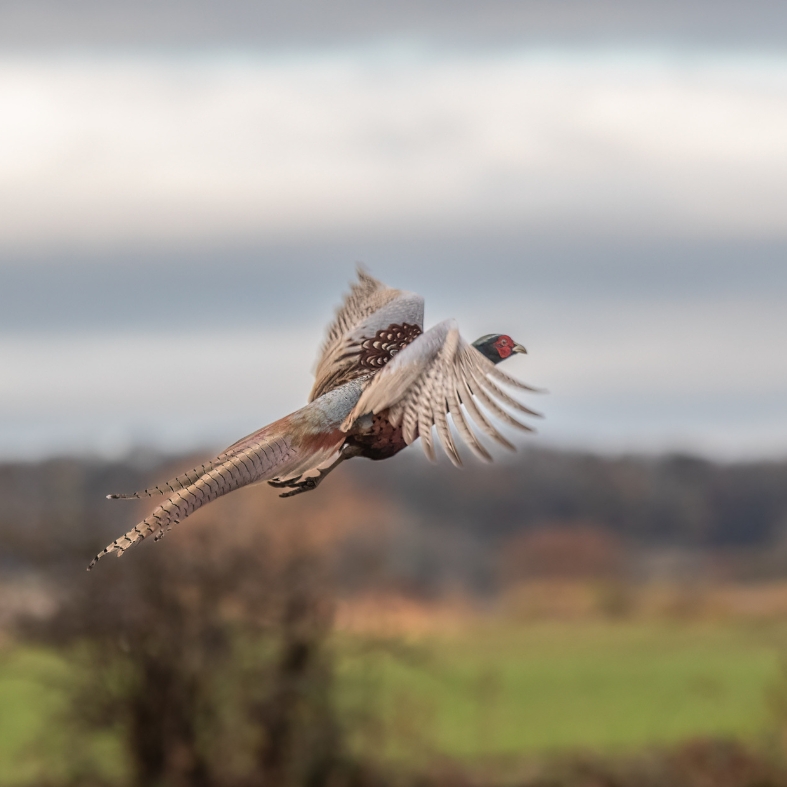
BASC urges caution over possible changes to EU trade rules
The European Commission is considering changes to EU rules which would impact the trade of eggs and birds from areas hit by avian influenza (AI).
Get information on the legal shooting season for mammals and birds in the UK.
Apply for funding for your project or make a donation today
Comprehensive information and advice from our specialist firearms team.
Everything you need to know about shotgun, rifle and airgun ammunition.
Find our up-to-date information, advice and links to government resources.
Everything you need to know on firearms law and licensing.
All the latest news and advice on general licences and how they affect you.


Glynn Evans brings us up to date on the general licences which permit the releasing of gamebirds on European protected sites in England, and discusses what comes next.
Many of you will be aware that, following a withdrawn legal challenge and an evidence review conducted by Defra, the government introduced legislation in England which prohibited the release of pheasants and red legged partridges on or near (within a 500 metre ‘buffer zone’) European protected sites. The legislation sits alongside a licensing regime, under which the general licences GL43 and GL45 are issued.
The changes were made by using a statutory instrument to amend schedule 9 of the Wildlife and Countryside Act 1981. The purpose of this legislation was to put in place additional precautionary measures to ensure release of gamebirds does not have a significant effect on the conservation objectives of protected sites.
This legislation is subject to what is known as a sunset clause, which means it is valid for a fixed period, expiring on 30 May 2025.
Also cited within the legislation is a requirement for the Secretary of State to carry out a review before the end of May 2024. This was delayed by the general election, but Defra has now issued its post-implementation review, complete with recommendations.
Defra’s review assessed certain key evidence and identified if the interim licensing regime has met fundamental objectives. These include:
Scientific studies regarding the ecological effects of gamebird release are currently underway, including work funded by BASC.
However, until such time that new research is brought to light, Defra is recommending to ministers that the legislation and current approach should continue. This would not include a sunset clause which limits the time allowed to complete the research programme.
Defra is in the process of preparing a new statutory instrument which should be in place in early January. This will prevent a ‘regulatory gap’ and should provide certainty to those in our sector who release gamebirds on or near protected sites in England.
BASC supports Defra’s proposal on the basis that the government will review the need for the current measures as more evidence comes forward, and consider alternative approaches.
From the very beginning of discussions relating to the initial legislation, BASC engaged directly with the government to representation our members and ensure the shooting community’s voice is heard.
This has included being prepared to take robust action when required, such as a legal challenge relating to the removal of Special Protection Areas (European protected sites designated for bird ‘features’) at very short notice from the general licences. Subsequently, we have seen the issuing of GL45 which covers these areas.
This engagement has continued and, working with our partner organisations via Aim to Sustain, we have provided substantial information to the review at a time when others have submitted views calling for greater restrictions, such as doubling the buffer zone.
As for what comes next, BASC will continue to fund relevant scientific work as well as representing members at all levels. We are also on hand to provide practical advice and support on the ground to member who require assistance or advice.


The European Commission is considering changes to EU rules which would impact the trade of eggs and birds from areas hit by avian influenza (AI).

Shoot owners who manage grassland habitats can apply for annual funding of up to £646 per hectare from Defra.

With the dust settled on BASC’s Northern Gamekeepers’ Conference, Gareth Dockerty reflects on an eventful and accomplished day in North Yorkshire…